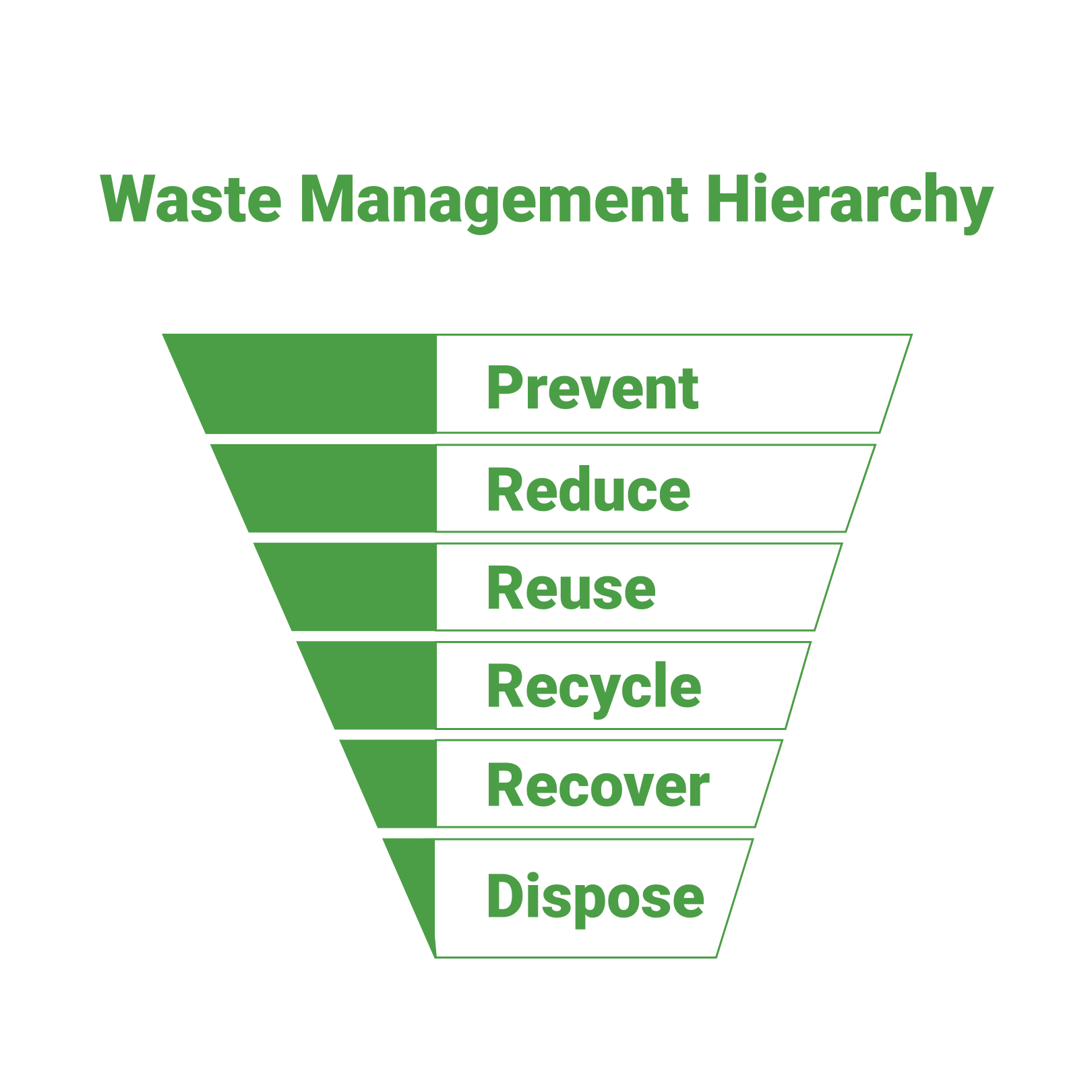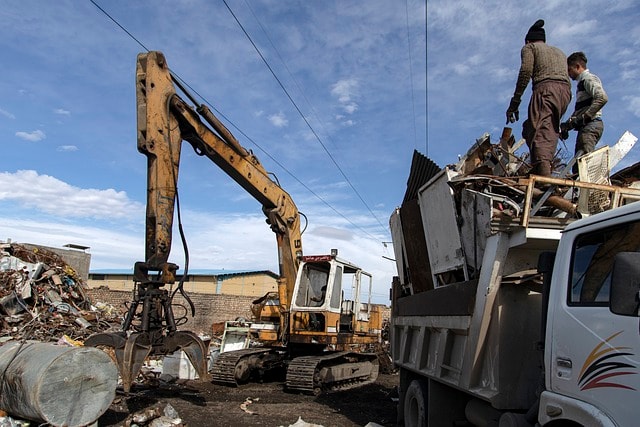Managing waste in the modern age involves combining the technological improvements developed over centuries of waste management with prudent, ethical, and sustainable goals in mind.
This combination joins two major threads in human life: keeping the lessons of the past with the ideals of the future.
Waste management in Australia follows this trajectory and challenge. It helps to keep companies both innovative and reliant on years of experience.
Cleanway heeds this call. With over twenty years of waste management experience in Australia, it is well aware of traditional waste management best practices.
But, as a company with a sustained history of environmental best practices, it understands the need to create a sustainable and eco-friendly future.
Managing Waste
Managing waste in a safe and secure manner is a must. This goes for both household waste and industrial waste.
While the total degrees of waste production might differ, everyone must play their part in building a better future.
The tactics for managing waste have evolved over time. Years ago, it might have been acceptable to dump all waste indiscriminately in a landfill. However, this tactic is no longer an effective long-term solution.
Waste Management in Australia
Waste management in Australia involves a systemic approach that aligns with the country’s position as a global economy. Its various moving parts reflect its unique history, culture, and vision for the future.
The intricacies of it are explored in the following blogs in other Cleanway blogs.
Waste Management Hierarchy
The waste management hierarchy underscores many of the current tactics used by companies within the waste industry. Its fundamental goal is to promote more efficient and sustainable waste disposal practices.
Simply throwing all types of waste on a landfill or dump site is no longer the be-all and end-all of waste management.

The waste management hierarchy is a six-point logistics triangle. It breaks down the best ways to deal with waste, with prevention at the top as the most ideal and disposal at the bottom as the last choice.
Waste Prevention
Waste prevention as a method of managing waste speaks to a general need to stop waste from being formed in the first place. It speaks to a holistic need to cut down on unnecessary production and its subsequent creation of obsolete and unused products.
Waste Reduction
Similar to prevention, waste reduction seeks to minimise the gross creation of waste and other forms of garbage. It seeks to address waste at the production stage by incentivising manufacturers to cut down on total production by utilising more effective means. A successful waste reduction program also lowers disposal costs and the burden of natural resources in processing facilities.
Waste Reusing
Waste reuse techniques are one rung below waste reduction. At this stage, it is assumed that necessary steps have been taken to minimise production. Waste reuse seeks to find innovative ways to give a new life to waste instead of having it destroyed, converted, or entirely disposed of.
Waste Recycling
One of the most popular waste management methods, recycling, entails finding new ways to use discarded materials. It can involve repurposing materials or entirely recreating a product. Creativity is key. Recycling programs help to reduce greenhouse gas emissions. Additionally, recycling creates jobs and other community programs.
Waste Recovery
Waste recovery is one of the lowest on the hierarchy. It seeks to take what parts are salvageable from a discarded product and use them in a new way. It is a common practice for large machine parts.
Waste Disposal
Waste disposal might be the most recognisable waste management method, but it is far from the best. Disposal should be seen as a final solution because once something is disposed of, it’s effectively left to rot and serves no further purpose.
Managing Waste in the Modern Way
There are some distinctly modern ways of managing waste. Many of them revolve around the waste management hierarchy and promote environmental best practices.
Recycling
Recycling comes up a great deal whenever waste management is discussed. This is because it provides some of the best solutions. Ultimately, it combines equal parts reduction and disposal, allowing for a product that suits the best of both worlds.
Waste-to-Energy
Two goals for the future are combined whenever waste-to-energy is discussed: Our desire to reduce waste and our desire to find clean energy solutions. Waste-to-energy is one of the best combinations of the two.
Singapore famously runs off this technology. It serves the purpose of finding a new life for waste, but it does not mean that it is completely clean. Air pollution, if improperly managed, can be caused if incineration is used.
Landfill Diversion
Landfill diversion combines many of the waste reduction techniques already discussed. In short, it looks at finding alternative solutions to the traditional landfill method.
Doing so helps to alleviate the burden of landfill overcrowding as well as incentivises new and innovative technologies.
New Waste Management Techniques
New waste management techniques are becoming increasingly popular as companies look for innovative ways to combine waste management and modern practices.
Artificial intelligence and machine learning are making their way into the industry. Technology companies are looking at AI’s potential for:
- Enhanced waste sorting: New machinery can rummage through waste, minimising human contact.
- Optimising the waste hierarchy: AI technology can help to find innovative ways to prevent, reduce, reuse, recycle, and recover old materials, thereby minimising disposal. It also helps with tracking waste along the waste stream.
- Route optimisation: new waste management technologies are capable of optimising the routes of waste collection, thereby reducing greenhouse gas emissions and other carbon dioxide emissions.
These are just a handful of potential future solutions. It is undoubted that as society continues to develop, more innovative waste management systems will form.
Solid Waste Management
Solid waste management involves the work many people think of when waste management activities are discussed. They include garbage disposed of in large trash and recycling bins as well as other forms of municipal solid waste.
They include organic materials and forms of hazardous waste. In short, any waste generated by or into solid items is solid waste.
Managing Waste Generated
In order to manage waste and waste materials in a safe and secure manner, the total waste generated must be accounted for and reduced. A great way for a company to understand and improve its waste management systems is through a waste audit.
A waste audit can help a company or business achieve its waste reduction goals by streamlining its current systems.
Waste management companies can also advise on production techniques to help with reducing waste in the manufacturing state.
What Can a Company do to better manage waste?
Consider setting up recycling programs and other waste management activities within your local communities. This helps to ensure waste minimisation and will highlight your organisation’s sustainability efforts.
What Bins help with managing waste?
There are a number of bins that help with managing waste. They include
- Recycling bins
- Waste bins
- Providing composting bins visible to employees and the wider public
- Bins for food waste
- Special bins for raw materials, if needed
Find out about your municipal or county programs that promote different waste bins.
What are the benefits of waste management activities?
Effective waste management activities help cost savings, protect human health by separating hazardous materials, and promoting recycling services. It also works in delaying final disposal costs, thereby reducing total production costs.
Is Recycling Good for Natural Resources?
Recycling conserves natural resources by reusing precious metals and other valuable items. Electronic waste commonly contains valuable minerals that can be extracted and reused through recycling.

